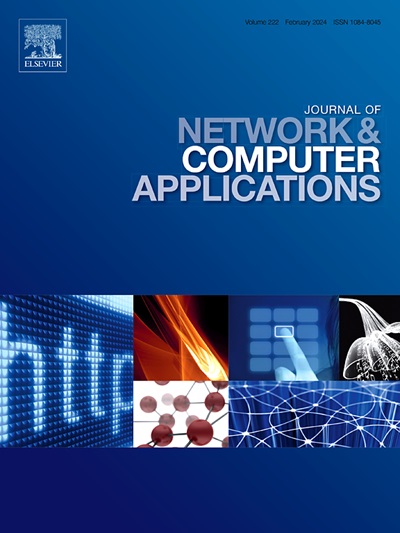基于广义随机Petri网的Kubernetes微服务节能性能优化
IF 8
2区 计算机科学
Q1 COMPUTER SCIENCE, HARDWARE & ARCHITECTURE
引用次数: 0
摘要
Kubernetes编排的微服务系统架构的优势包括其动态调整以满足不同需求的能力,从而确保高负载期间的应用程序性能要求,同时减少低需求期间的电力消耗。然而,在微服务系统中正确配置自动伸缩带来了巨大的挑战,因为涉及到无数的参数,最佳选择高度依赖于应用程序和底层基础设施。平衡系统性能和能源效率本质上是困难的,因为一个领域的增强通常会导致另一个领域的损害。在本文中,提出了一个模型来帮助规划由Kubernetes编排的微服务架构的性能和电力消耗,利用Pod和集群自动伸缩。该方法基于广义随机Petri网模型的应用。这种方法可以创建一个综合的模型,该模型包含各种Kubernetes自动伸缩配置元素、单个微服务的性能特征以及底层基础设施的容量。所提出的模型能够计算关键指标,包括响应时间、吞吐量、丢弃概率、电力消耗、每个请求的平均消耗以及能量-响应时间加权乘积。采用敏感性分析方法识别对建筑性能和电耗影响最大的因素,从而指导参数调整工作。还确定了最优配置选择取决于预期的工作负载。结果表明,在低工作负载期间使用具有较高自动缩放阈值的配置可以减少大约32%的电力消耗,而不会显著降低性能。相反,在高到达率的场景中,这种自动缩放配置可以减少37%的消耗,但代价是响应时间增加了175%。本文章由计算机程序翻译,如有差异,请以英文原文为准。
Energy-efficient performance optimization in Kubernetes microservices using Generalized Stochastic Petri Net
The advantages of microservices system architectures orchestrated by Kubernetes include their capacity to adjust dynamically to meet varying demand, thereby ensuring application performance requirements during high load periods while reducing electrical consumption during low demand periods. However, the proper configuration of autoscaling in microservices systems presents significant challenges due to the myriad of parameters involved, with optimal choices highly dependent on both the application and the underlying infrastructure. Balancing system performance with energy efficiency is inherently difficult, as enhancements in one area often lead to detriments in the other. In this article, a model is presented to aid in the planning of performance and electrical consumption for microservices architectures orchestrated by Kubernetes, utilizing Pod and cluster autoscaling. The approach is based on the application of Generalized Stochastic Petri Net models. This methodology enabled the creation of a comprehensive model that incorporates various Kubernetes autoscaling configuration elements, the performance characteristics of individual microservices, and the capacity of the underlying infrastructure. The proposed model is capable of computing key metrics, including response time, throughput, discard probability, electrical consumption, average consumption per request, and the Energy-Response time Weighted Product. Sensitivity analysis was employed to identify the elements exerting the greatest impact on the performance and electrical consumption of the architecture, thereby guiding parameter adjustment efforts. It was also determined that the optimal configuration choices are contingent on the expected workload. The results indicate that using configurations with higher autoscaling thresholds during low workloads can reduce electrical consumption by approximately 32% without significantly degrading performance. Conversely, in high arrival rate scenarios, this autoscaling configuration results in a 37% reduction in consumption but at the cost of a 175% increase in response time.
求助全文
通过发布文献求助,成功后即可免费获取论文全文。
去求助
来源期刊

Journal of Network and Computer Applications
工程技术-计算机:跨学科应用
CiteScore
21.50
自引率
3.40%
发文量
142
审稿时长
37 days
期刊介绍:
The Journal of Network and Computer Applications welcomes research contributions, surveys, and notes in all areas relating to computer networks and applications thereof. Sample topics include new design techniques, interesting or novel applications, components or standards; computer networks with tools such as WWW; emerging standards for internet protocols; Wireless networks; Mobile Computing; emerging computing models such as cloud computing, grid computing; applications of networked systems for remote collaboration and telemedicine, etc. The journal is abstracted and indexed in Scopus, Engineering Index, Web of Science, Science Citation Index Expanded and INSPEC.
 求助内容:
求助内容: 应助结果提醒方式:
应助结果提醒方式:


